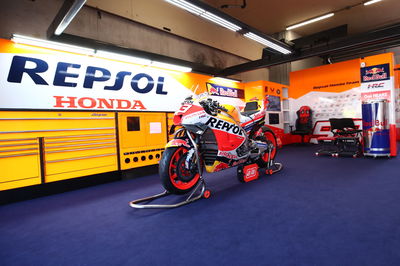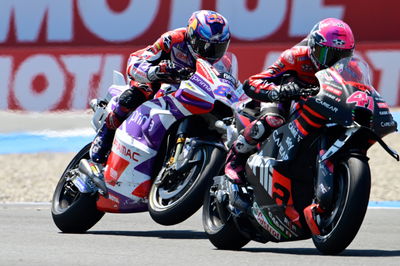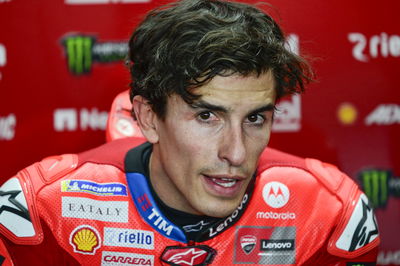MotoGP Concessions for Honda, Yamaha ‘not discussed yet’

Ducati, Suzuki, KTM and finally Aprilia all passed through Concessions, granting a range of technical perks until each manufacturer achieved a threshold level of podium results.
The initial Concession system for 2014 applied to any factory that did not achieve a dry win in 2013. In other words, Ducati, which had been without a podium that year. Plus any new manufacturers and the 'Open class' ART and Forward Yamaha bikes, using the standard ECU.
The Concessions available were generous: 4 litres of extra fuel, 7 more engine changes, a softer rear tyre allocation, no engine development freeze and extra testing.
Ducati’s success saw their fuel advantage cut to 2 litres (as specified) in 2015, when Suzuki and Aprilia returned, then climb out of Concessions entirely for 2016 to rejoin Honda and Yamaha on the same technical rules (Honda and Yamaha are the only current factories not to have ever had access to technical concessions).
- Marc Marquez “decided not to race last night, most difficult moment, won't decide MotoGP future now”
- Assen: MotoGP Results
2016 also saw the mandatory use of the standard ECU, erasing the Open class and causing the creation of a watered-down Concessions package.
The extra race fuel and softer tyre perks were removed leaving only extra engine changes and private testing, plus exemption from the engine (and later aerodynamic) design freeze.
It was this Concession system that Suzuki, KTM and finally Aprilia graduated through, with all manufacturers now competing under identical technical rules.
But a clear divide has emerged between the performance of the European (Ducati, KTM and Aprilia) and Japanese (Honda and Yamaha) factories, whose results have gone sharply downhill in recent seasons.
Although Yamaha fought for the title with Fabio Quartararo last year (albeit winless after the summer break) and Honda broke its victory drought with Alex Rins this year, European bikes now fill the top eight in the riders’ championship and top three (out of five) in the constructors’ standings.
The revised race weekend format, with less practice time due to a new Sprint race every Saturday, has also made it harder than ever to close the technical gap.
With Suzuki’s shock exit fresh in the memory, there are suggestions that the Concession system should be tweaked to help ensure Honda and Yamaha don’t fall further behind and perhaps start to question their MotoGP futures.
At present, the only way for a manufacturer to regain Concessions is to go an entire season without a Sunday podium (as occurred for Suzuki in 2017). But that already excludes the Japanese brands courtesy of Rins’ win and Quartararo’s third place at COTA.
The Concession criteria would thus have to be rewritten, for example something along the lines of “any manufacturer that does not score two or more race wins during a season”.
In return for relaxing the results, the technical perks would likely need to be diluted to gain agreement from the Europeans. Perhaps a tiered system, that initially only allowed extra testing with MotoGP race riders.
Repsol Honda team manager Alberto Puig didn’t exclude the possibility of a change to the Concessions in order to help the likes of Honda but insisted it has not been officially discussed - yet.
“This is something that still we did not discuss yet, with Dorna. We don't know what is the outcome of all this. Still we received not so much info about this matter, so I cannot give a proper answer,” Puig said on Sunday at Assen.
While Quartararo and team-mate Franco Morbidelli are ninth and eleventh in the world championship for Yamaha, Honda's punishing run of injuries means the leading RC213V rider remains Rins, in just 13th.
Honda has the same V4 engine layout as the Europeans, but Yamaha is now the only remaining manufacturer still using an inline configuration.












